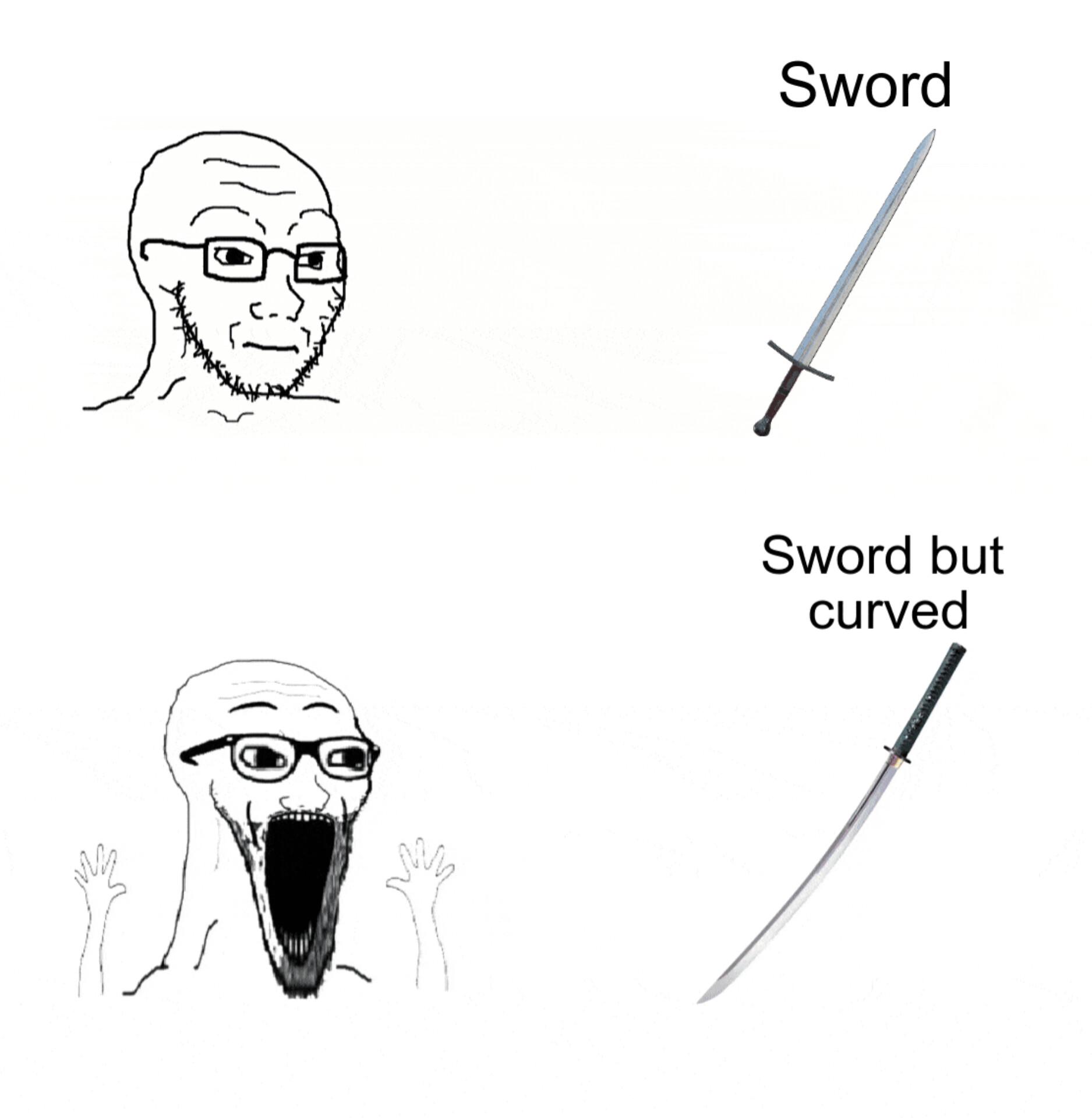this post was submitted on 27 Sep 2024
433 points (97.0% liked)
Memes
45241 readers
1561 users here now
Rules:
- Be civil and nice.
- Try not to excessively repost, as a rule of thumb, wait at least 2 months to do it if you have to.
founded 5 years ago
MODERATORS
you are viewing a single comment's thread
view the rest of the comments
view the rest of the comments

While you were out there whacking your straight stick, I spent years studying the blade...
The whole "Japanese steel was really weak" thing is as much of a myth as the whole "katanas are super powerful superior weapons" thing.
They're all just swords, and don't make that much of a difference either way.
Yeah, Japanese steel wasn’t great, but they were working with what they had available at the time. Katanas were basically made out of iron dust, which had been melted into slag by filtering through charcoal. The resulting chunks of steel were basically straight up slag, not nice even ingots. So the steel they got was actually extremely high carbon in places, but that also meant it was brittle as hell, because those carbon pockets were prone to shattering.
So the folding was invented, to even out the steel’s carbon content (just like how a Damascus steel blade has visible stripes, Japanese steel had invisible stripes of high and low carbon steel) and to lower the carbon content overall; Every time you heat for another fold, you’re evaporating some carbon. So the folding process took the steel from extremely high carbon pockets to a more evenly distributed carbon content.
Now that modern steel processing exists, the only real reason to stick to the folding method is tradition. There’s no need to fold modern steel ingots because they’re already homogenous and can be produced at whatever carbon level you want.
Impurities are melted into slag. Not the iron. That's what slag is.